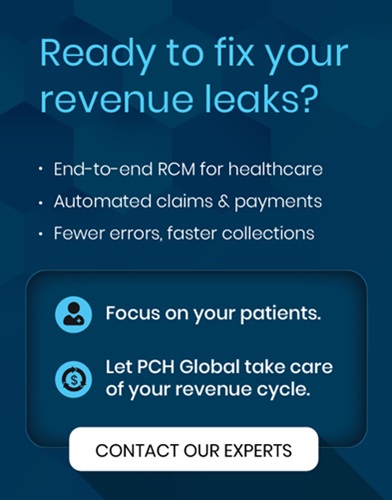
Medical billing and healthcare claims processing have always been challenging tasks, with a lot of manual paperwork, tedious data entry, and lengthy back-and-forth communication between providers, payers, and patients.
However, the healthcare industry is rapidly changing, and it's time to keep up with the times. Technology advancements in the healthcare space have already made a big impact on the way claims are processed, and they're set to revolutionize medical billing.
In this article, we will discuss some of the top technologies that are improving the healthcare claims processing system. But before we do that, why don’t we have a brief discussion of how healthcare claims are processed through the different levels of this complex system?
Once we understand how each level works, it will be much easier to understand later how different types of technologies affect each level and how much pressure it alleviates from the inefficiencies of the current systems and processes.
How is a Typical Healthcare Claim Processed?
- John falls down a flight of stairs and breaks his arm. He goes to the nearest hospital.
- The minute he enters the emergency room and gives his personal details and insurance info, the claims process begins in the background.
- Each medication, injection, medical accessory, scan, surgery, or consultation that John receives in the hospital is noted down in detail using proper medical coding nomenclature. This information is then fed manually into the patient management system at the hospital.
- After a few hours with the doctors, John walks out with a cast around his arm.
- Once John is medically discharged, the hospital will then print out all his documentation, validate it, arrange it, pack it, and mail it to his insurance company. Inside this package will be a bill for charges of service (not including any charges paid via co-pay upon check-in).
- After about 7 to 14 days when the insurance company receives the package containing John’s claims, they will send it forward for digitization - a manual process where all information from paper is typed and stored securely into a digital system.
- Once the digitization of John’s paperwork is complete, the original paper documents will be archived in a secure physical location and the digital copies of those documents would be forwarded to a certified claims processor who would then review John’s claim. This review is necessary to make sure it is accurate by comparing it against the insurance plan; to validate the medical services that were rendered to John were in fact, covered by his insurance.
- If the claims processor finds out that the services received were indeed covered by John’s benefits, they will notify the insurance company. The insurance company will then pay the claim amount to the hospital based on John’s coverage terms. They may pay the entire claim in full depending on John’s insurance plan. If any service that John received happens to fall outside his coverage, then the amount for that service will be added to the remaining balance and the remaining balance will eventually be billed to John, the patient.
- Next, all amounts will be validated and applied to the deductible as well as out-of-pocket totals, in accordance with John’s insurance plan.
- An explanation of benefits (EOB) will then be sent to John over email or mail which will lay out a detailed list of services received, how much was covered by insurance, how much the provider paid, and what remains to be billed.
- Finally, a closing bill will be sent to John for payment. When John makes the payment, it will mark the end of his claims processing journey.
Also Read: How Does the Medical Claims Process Work in the United States?
Using Technology to Optimize Healthcare Claims Processing
Since the healthcare claims process involves a lot of manual paperwork, there is a lot of time and cost involved in the system. Therefore, healthcare organizations are looking for new and improved ways to streamline the entire procedure, reduce human errors, and facilitate better communication between stakeholders in order to reduce costs and improve overall customer experience. Technologies are the key to making that happen.
Here are a few cutting-edge technologies that are currently being used by industry leaders in order to improve the claims processing experience:
- Internet of Things:
Wikipedia defines IoT as “physical objects with sensors, processing ability, software and other technologies that connect and exchange data with other devices and systems over the Internet or other communications networks“.
Healthcare claims processing can take advantage of this networked universe of intelligent devices such as smartphones, smartwatches, home assistants, smart cars, smart manufacturing centers, and many more.
Let’s borrow John one more time from our previous example. Let’s assume that he was wearing an IoT device, like an Apple Watch, when he took the fall. Now, Apple Watches, in general, have the ability to detect falls and call emergency services automatically.
An insurance company, in this case, could build an app that could take advantage of this ability and send an automatic notification to the insurance company’s customer service department whenever John falls down. The customer service agent could then get in touch with John and assist him further; guide him in selecting the nearest hospital that gives insurance coverage to John, notify the hospital about John before John reaches the medical facility, etc.
IoT implementations such as these fast-track the claim registration process and make the experience hassle-free while also reducing stress for the patient as well as relatives who are involved in the caregiving process.
- Blockchain:
Smart contracts are programs stored on a blockchain that run automatically when predetermined conditions are met. They typically are used to automate the execution of an agreement so that all participants can be immediately certain of the outcome, without any intermediary's involvement or time loss.
If you recall the different levels of the healthcare claims processing system mentioned earlier, you would notice that there is an incredibly long list of verifications and validations that are executed by multiple parties at different levels in the claims processing lifecycle.
It would not be an exaggeration if we assume that the majority of time spent waiting while a claim is processed, is due to the stringent checks that are imposed upon the facts of the case. After all, the integrity and accuracy of these checks are the things that keep the entire system valid and running.
Smart contracts have the ability to automatically validate and execute important terms and conditions of an agreement in a way that does not require human intervention.
This mega-useful time-saving feature of blockchain smart contracts, therefore, boosts efficiency by eliminating large chunks of time spent unnecessarily on manual tasks in the healthcare claims processing system.
- Computer Vision Models:
Computer vision models derive results from visual inputs such as images and videos. Therefore, they can assist with the initial claims investigation step.
Computer vision models are built to have this ability to assess, interpret, and store important information by evaluating high-level data from videos and photographs taken by policyholders or claims adjusters.
For example, John could send a short video to the insurance company in which he keeps all his important documents in the frame for 5 seconds each, one after the other. A sophisticated computer vision model could then assess this video and print out a neat report in a spreadsheet or a word document containing all the important details of the documents that John showed in his video.
This ability to process high-level information can not only deliver a phenomenal customer experience but also save tons of time in gathering important claims data from patients.
- Optical Character Recognition:
OCR is an NLP-based technology (natural language processing) that derives meaning from handwritten documents and is used to categorize them. In the healthcare claims industry, it is aimed at improving the initial claim processing documentation and policy checks.
Both initial claims investigation and policy checks involve processing handwritten documents such as witness statements, policyholder statements, police and medical reports, and more.
OCR allows insurers to automate the extraction of data from such documents and focus on the more important parts of claims processing that require human intelligence and intervention.
Need help processing your paper claims? PCH Global is one of the best paper claims processing services in the United States, built using cutting-edge technology and managed by seasoned industry experts. Get in touch with us to learn more.
Sources: google.com | en.wikipedia.org | reddit.com | research.aimultiple.com | en.wikipedia.org
DISCLAIMER: The information on this site is for general information purposes only and is not intended to serve as legal advice. Laws governing the subject matter may change quickly and XBP Global cannot guarantee that all the information on this site is current or correct. Should you have specific legal questions about any of the information on this site, you should consult with a licensed attorney in your area.
